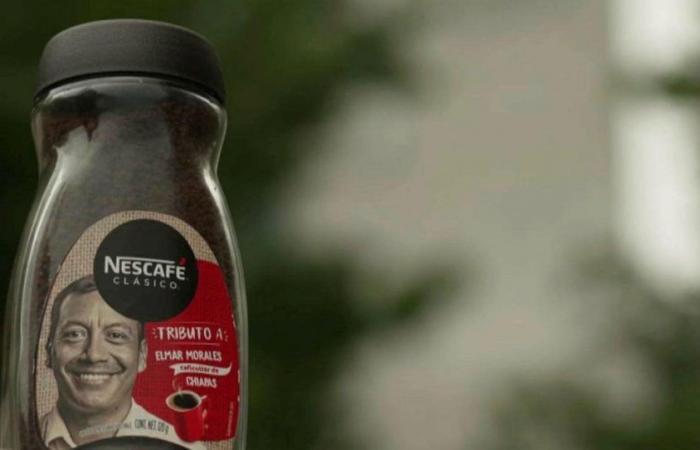The “Nescafé Plan” promised producers who supply Nestlé to improve their living conditions. But coffee growers denounce the prices paid by the global coffee giant: they believe they can no longer make a decent living from the cultivation of robusta, the price of which is nevertheless soaring on the markets.
Seven letters known around the world: Nescafé, one of the cult brands of the multinational Nestlé. The Swiss, like many others, love it. Every year, they swallow some 280 million cups, or 9 per second nationally. The packaging displays a reassuring commitment: “100% responsible sourcing”.
Does this slogan correspond to reality? To find out, the RTS show A Bon Entendeur traveled to Chiapas, in the south of Mexico, to meet robusta producers who supply Nestlé. The success of soluble coffee owes a lot to this caffeine-rich variety.
The “Nescafé Plan” launched in 2010
Robusta is at the origin of the “Nescafé Plan”, launched by Nestlé in the Chiapas region in 2010. The principle: the company distributes robusta plants to coffee producers and teaches them the methods of harvesting this new variety . Through intermediaries, the company buys back the green coffee at the end of the harvest, before roasting it in its own factories.
With this method, the Swiss multinational established itself in a few years as the main buyer of robusta coffee in the region. And this with a project which promised producers to improve their living conditions and allowed Nestlé to communicate on its ethical commitments.
The “face of the brand” is disillusioning
Elmar Morales González is one of those who joined the “Nescafé Plan” twelve years ago. To the point of lending his face and smile to the brand, which displayed it on its packaging. But today, the man is disillusioned. “When I see that they buy my coffee very cheaply, I say to myself what nerve, what a lie, to make people believe that I am very happy to sell my coffee to Nestlé,” he says. “I’m not happy, I’m angry. Because they make a lot of money selling this coffee. But me, as a producer, I don’t win, I lose.”
It was all publicity. It was all a trap to attract more producers
In 2012, the man joined the Nescafé school alongside around forty other hopeful producers. There they learn how to take care of robusta, which they do not yet cultivate. The company’s message is clear: stronger plants for a more profitable harvest.
“Unfortunately, it didn’t happen like that. It was all publicity. It was all a trap to attract more producers. And a lot of us switched from Arabica to Robusta because we thought “there would be an improvement, that Nestlé was going to pay us directly and above all pay us well and this situation has deteriorated, especially in recent years”, testifies Elmar Morales González. Because since then, production prices have exploded, while the prices paid to producers have increased, but less sharply.
Abandoned farms

Faced with this reality, some simply left. In the region, abandoned farms are multiplying. “Before, in the time of our grandparents and our parents, having coffee plantations was synonymous with prosperity,” recalls Julio Castillo, also a producer in southern Mexico.
“But today it is no longer viable. Having coffee plantations, especially robusta, is a very precarious situation because we are restricted. Who has the capacity to make soluble coffee? Only companies like Nestlé. And globally, Nestlé is the main buyer of robusta beans for soluble coffee. There is no way out of this and this is what has led to the worsening of our economic situation (…. ) It’s very sad, but if it continues like this, I will have to sell the farm so as not to condemn my children to poverty.”
Having coffee plantations, especially robusta, is a very precarious situation because we are restricted. Who has the capacity to make instant coffee? Only companies like Nestlé

When contacted, Nestlé denied being responsible for the situation denounced by coffee growers. “As with any other commodity, coffee prices are subject to supply and demand and are set in the open market. The price of coffee is not a variable that Nestlé can determine or control alone,” writes the company from Vevey. “However, the Nescafé Plan in Mexico aims to ensure that coffee farmers have other means of improving their income in the long term,” referring in particular to the coffee plants offered to producers.
A report from Public Eye
“The price of coffee is a factor that helps determine prices [payés aux producteurs] but above all it is a poor excuse on the part of Nestlé”, comments Géraldine Viret, spokesperson for the NGO Public Eye, which is publishing a report this Tuesday on the working conditions of the coffee producers who deliver Nescafé.
Beyond the case of Mexico, the report also highlights the situation in Colombia, Honduras, Indonesia and Ivory Coast, where the majority of producers have not obtained sufficient income to ensure a decent standard of living. in 2022. “In Chiapas for example, Nestlé has a virtual monopoly. It is this company which dictates prices and we also see that, when prices rise on international markets, Nestlé does not pay more.”
TV subject: Ainhoa Ibarrola and Linda Bourget









